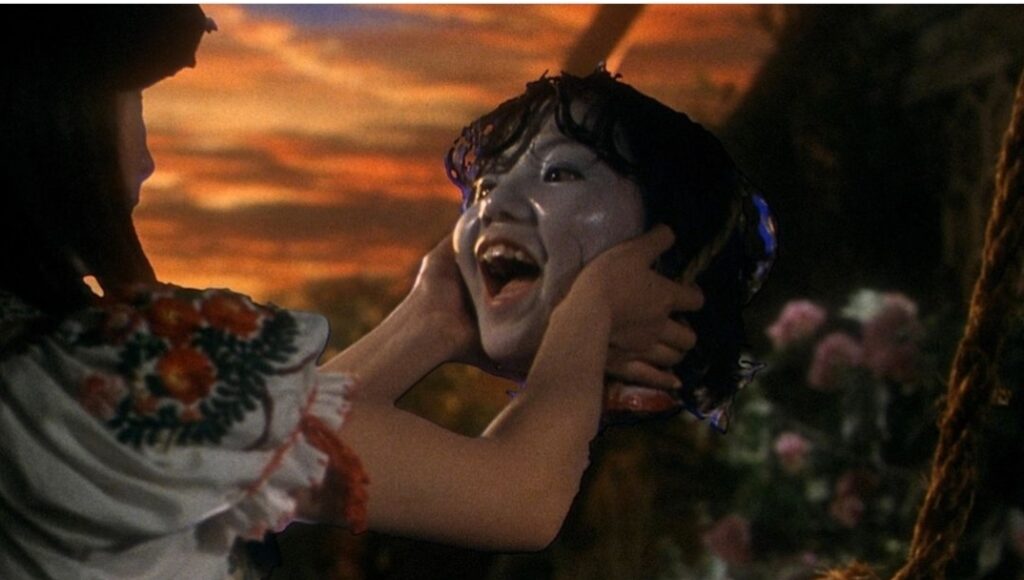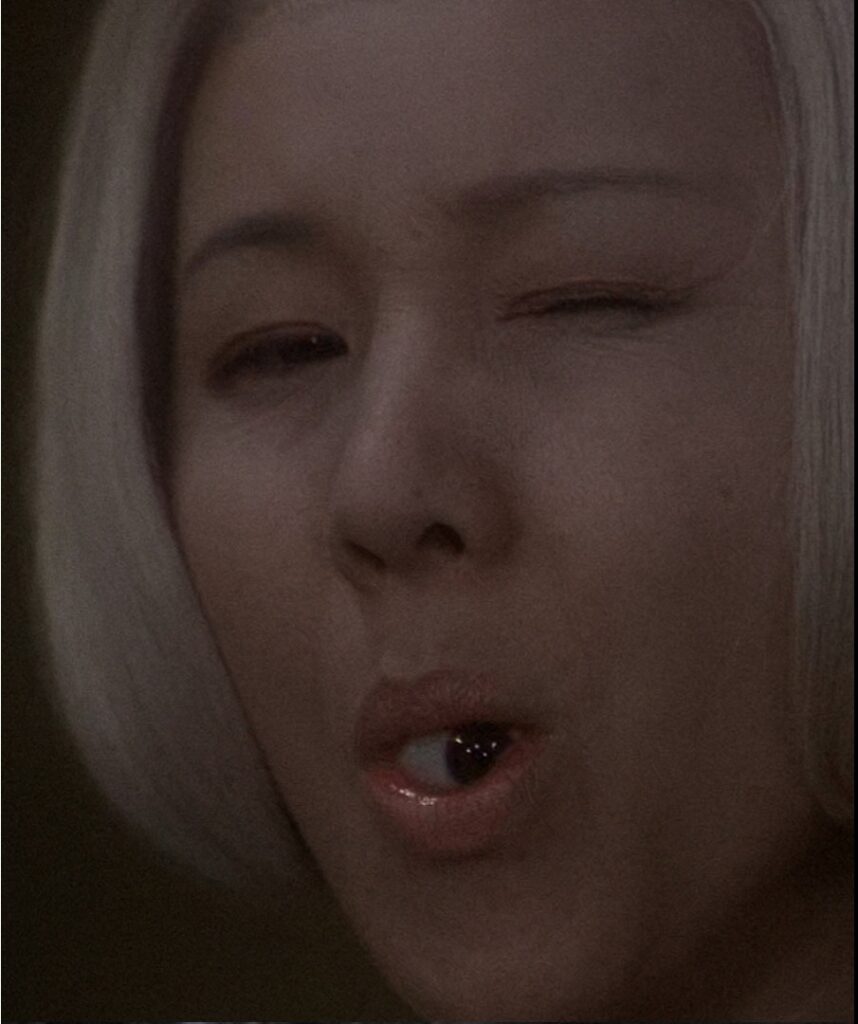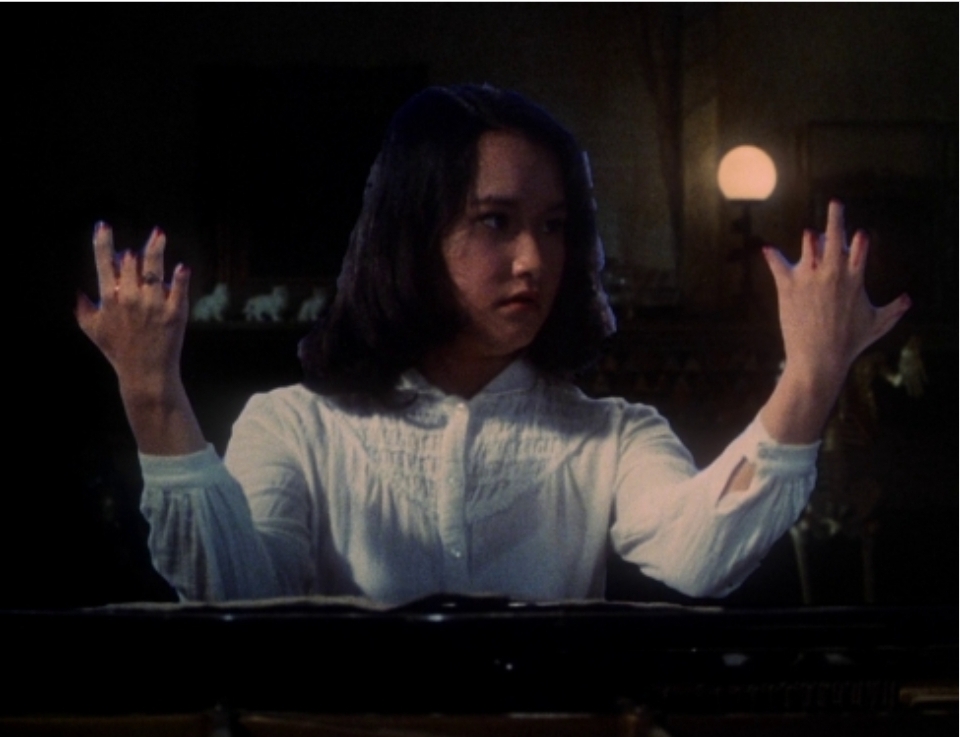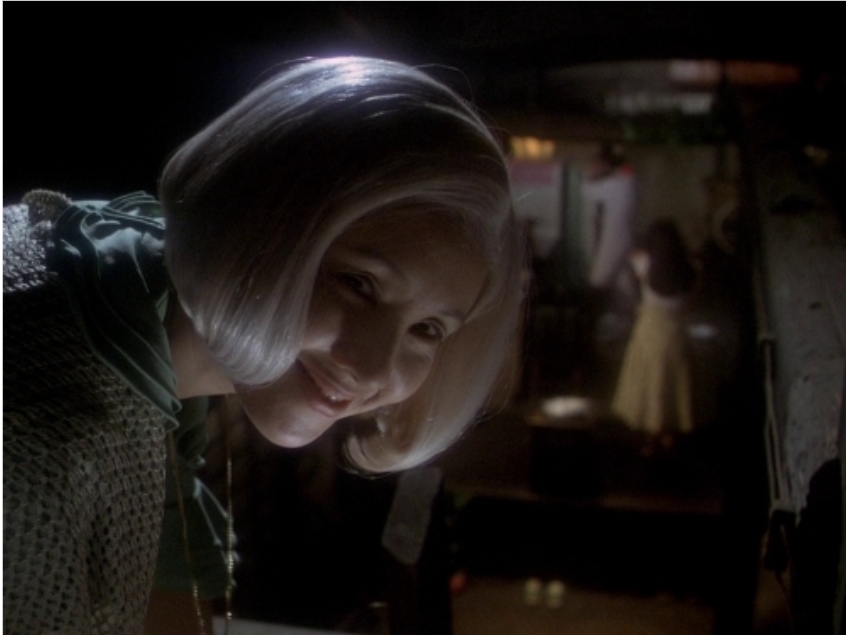|Phil Kolas|

Hausu plays at the Trylon Cinema from Wednesday, October 30th, through Sunday November 3rd. Visit trylon.org for tickets and more information.
A teenager’s disembodied floating head leaps out of a well and bites another teenager directly on her buttocks, with the camera holding for at least three full seconds on the whole framed image, like it was appreciating a work of art.
This is a Criterion Collection film.
With script assistance by an eleven-year-old girl (just adding to my theory that all children are soft psychos until social rules get a hold of them), Hausu is literally unlike any other movie you have ever seen or will ever see. So much so, in fact, that attempting to use human-typed words to convey the utter film experience of it all is a quest in futility, but that’s really the fun part for me, so we’ll go ahead and wing it for the best try I’ve got in me.
The plot itself is not much. Seven teenage girls (Gorgeous, Prof, Melody, Kung Fu, Mac, Sweet, and Fantasy–yes, seriously) travel to the country to stay at Main Girl Gorgeous’ Aunt’s home, so Gorgeous can avoid her new step-mom. Like every other horror movie ever made, going to any new house is obviously a guaranteed death sentence (also, ironically, leaving the house in every horror movie is also a death sentence—those subtextual genre themes get you no matter where you turn, huh?), so I don’t think it’s spoiling anything to let you know that things go very poorly for our heroines. My job here is to try and convince you of my personal belief that this movie rules so hard that it borderline justifies the very medium of film as a whole. That Tarkovsky quote that “films are a mosaic made of time” is especially true in this visual tale where a piano eats a girl’s hands, a fat schlub turns into a pile of bananas, a house fills to the brim with menstrual blood, and it’s all some of the funniest things you’ve ever seen in one of the creepiest movies you will ever watch. A friend once described it as “a Japanese Evil Dead,” and I’ll admit that’s the quickest elevator pitch definition I’ve found so far. And Evil Dead is good, but we’re not talking about Evil Dead right now, we’re talking about Hausu.
So, what is it about Hausu that not only lends itself to film but in fact would be lost if it were not a film? And I think Hausu is also a very good film. But that kind of cinematic measurement is mere subjectivity—I think Hausu rules, you might want to beat me up after wasting 90 minutes of your night and visiting you with a lifetime of watermelon eyeball teeth nightmares. But it’s more than just the pure organized queued-up assault of One Weird Thing After Another, as Evil Dead & Hausu do both have in spades. There are aspects of horror here that are only able to be conveyed by the act of film, and editing.

First and foremost, there is the challenge of the Viewer’s Imagination. That old chestnut—“leave the monster off the screen, we’ll just let the audience’s imagination do the work for us”—does in fact work like gangbusters most of the time, if we’re dealing with one monster. A shark, a xenomorph, a dream murderer, a drowned kid who can’t die, a werewolf, Dracula, whatever. What do you do when the monster is the house? You have nowhere to hide, but also the director can’t hide anything. But here you have the caveat, perhaps the asterisk, to the “Hidden Monster” trick—what you might call The Carpenter The Thing Clause—“What if we made a monster that was so goddamn gnarly that we came up with something the audience never could? That’s our job, let’s act like we’re getting paid for it.” Hausu is that in spades, co-written by an 11-year-old girl who doesn’t yet know what you “can’t do” in a movie. It is a visual feast, and you will leave the theater disappointed by other horror movies that don’t try half as hard. I’m sorry, I know, I’m cursing you. Like Nicole Kidman always says, “We come to the movies to get absolutely blown-out diaper-dump scared while a piano eats a screaming teenage girl alive.”

The question, again though, is why is it a movie? I would submit that it has to be a movie, in order to get everything out of it. In order to squeeze every ounce of creativity that is being visited upon you.
You can obviously write horror novels, but not this story. Or, more specifically, you could write Hausu in a book, but why would you? That would be like trying to make a silent film that just shows you an orchestra playing the 9th Symphony (title card: “And now the choir starts, it’s quite touching”). You could do that, but why would you? You’re losing something. You’d be losing a lot, quite frankly. This is also true for any version of Hausu that is not a film. You could not merely read about the spindly handicapped woman climbing the rafters and breaking the 4th wall to threaten you with eye contact before she destroyed these children—if she is in the book, she is in the book. The characters may not be safe, but you always are. You could threaten an audience in a play, sure! You could even come out of the stage and enter the seats—horrifying in any context! Even Oklahoma!—but you still could not flash-edit or reverse footage in a play, it is only forward motion. Movies are rewound at you, sound is rewound, your eyes are not your eyes, the camera owns those eyes. “I don’t want to look at that”—too bad you are looking at it! It is a full package.
Furthermore, the act of layering audio and visuals over each other is purely and only a cinematic tool. There is an early montage of the Aunt’s life before and during the war, and the fiance she lost. The scene conveys how absolutely creepy this woman’s life is because she is fiendishly and horrifically preserving her imagined past. The montage is shown with play-by-play voice-over commentary from the seven girls, who mention that the nuclear bomb mushroom cloud “looks like cotton candy” (which would be like saying 47 9/11 buildings “looked like a banana peeling itself”) And this only just reinforces how these girls are oblivious and out of their depth. This metaphorical delivery of all this information, of sound over visuals, is only possible in the film medium. In a book, you would be reading the grandma’s story and then reading the girl’s commentary. Even interjected, they would still be one after the other. That’s how linear words work. You cannot simultaneously read things that are happening simultaneously. I know, because I’ve read the books that have tried (I’ve read William Faulkner, and Ulysses & Finnegan’s Wake, so you don’t have to—you’re welcome, you’re right, I am a hero). You’d be losing a lot if this film was anything besides a film.

This film uses plenty of kinds of horror that other horror stories have used before it. Plenty of horror books, horror poems, and horror campfire stories use tropes that this movie uses. Classic Hits like “cultural and bodily preservation and immortality are inherently creepy,” “the difference between love & obsession,” “the fear of aging,” “the fear of maturing from girlhood into womanhood.” But none of those other mediums can do what this movie does with the tools of cinema, like footage being played in reverse to add to the nausea you feel, when you get an idea of the Aunt’s delusion for the youth she lost. Those stories don’t show you a character being eaten alive by a grandfather clock full of teeth. Those stories don’t bless you with the unforgettable visual metaphor of a pair of floating legs, of a woman who’s been chopped in half, still kung-fu-ing across the room to karate kick a painting of an evil white cat, and the house fills to the roof with menstrual blood. Such subtle subtext. You can convey all that in words (in fact, I just did, high five me), but the passage of time in the written word, which passes through each verb or adjective or adverb or whatever that you read, that only elongates the experience of the horror, which is a chronologically factual matter of diminishing returns. Things are less and less shocking over more and more story time. Books can certainly do suspense with a horrific ending (shoutout to A Rose for Emily by Faulkner, strap in for that one), but books cannot do shock like visual media can. If every word to describe a scene takes another tenth of a second, that horror will be surpassed when 12 film frames give you the most unhinged and hilarious visual fever dream you’ve ever seen in 12/24ths of a second, which is also running in reverse with a sepia tone wash out and a nightmare soundtrack. It’s not like you can’t make a novelization of Hausu, but why would you? It already existed first in its greatest and final Akira form.
There are books that must be books (good luck making a good TV or movie version of Gravity’s Rainbow), there are shows that must be shows, and in that sense, there are also movies that can only be movies. And in fact we are a better world for having movies, and Hausu is my Exhibit B for that fact, for the entire medium of films as a whole (behind only Godzilla, which is literally the reason 60-foot theater screens were ever invented—there is no “book version” of Godzilla, except Moby Dick, the only novel about fighting a Kaiju in the Canon of Western Literature there will ever be, because there will never be another Melville, don’t @ me). In Hausu, there are visual gags & horrors, personal and emotional and artistic effects, that would be lost if it was not filmed. Editing and color bleaching and images that you could describe in a book (or a movie review), but why would you?
There are many other worlds where Hausu still exists—as any form, a poem, a screenplay, a painting, a post-it note flip book—but the best of all possible worlds is ours, this one, where this film exists, as a film.
Edited by Finn Odum
